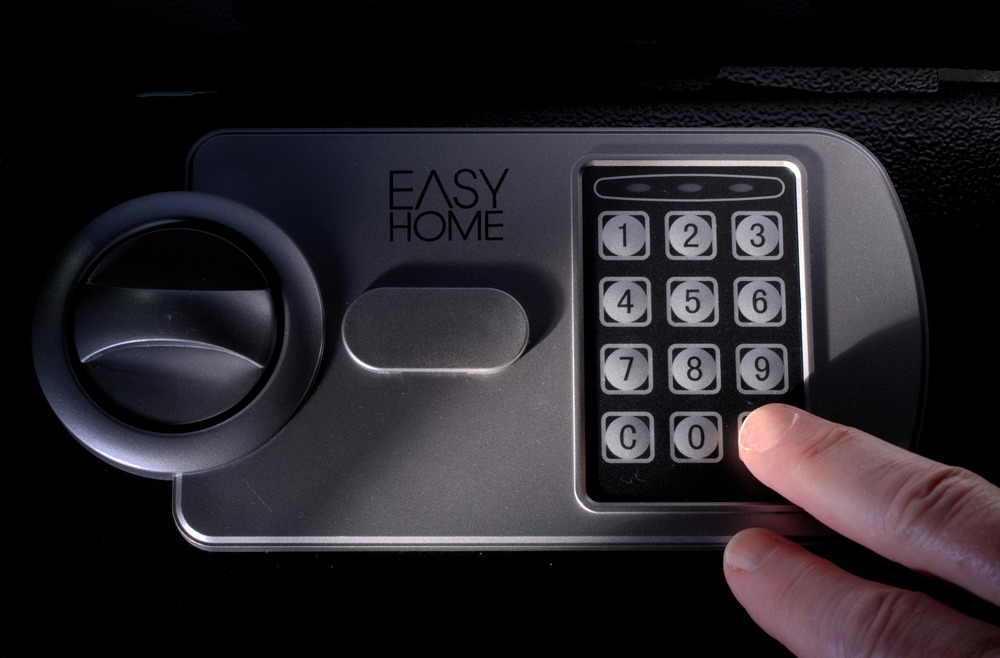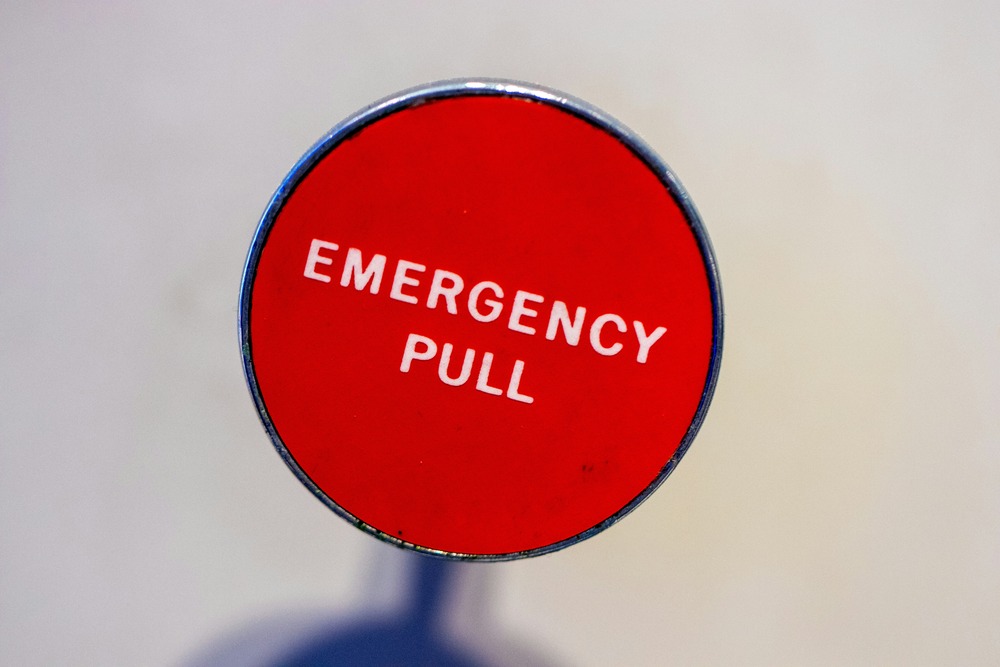When Every Crisis Felt Like a Disaster
Back when I was broke, every small problem felt like a full-blown crisis.
If I cracked a tooth on a granola bar, the panic set in.
If the AC died in July, it felt like the universe was testing me.
And when my car started making noises that sounded suspiciously like a humpback whale; it was game over.
I had no financial cushion. Nothing between me and life’s chaos. Every bill, every repair, every “surprise” hit like a freight train.
That’s when I realized: I wasn’t just broke. I was vulnerable.
The Turning Point: Building a Safety Net
When I decided to take control of my money, the first thing I did wasn’t to invest, or pay off every debt, or read a hundred finance books.
It was simple: I built an emergency fund.
Think of it as your personal shock absorber; a small, quiet hero sitting in your bank account, ready for the day Murphy’s Law strikes (“Anything that can go wrong, will go wrong”).
Without one, Murphy moves in. He raids your fridge, watches Narcos in your guest room, and eats your leftover pizza faster than you can say “cauliflower cheese crust.”
So here’s how to stop that from happening.



Step 1: Start Small, But Start Now
If you still have consumer debt, your first goal isn’t a giant emergency fund; it’s a starter one.
Save $1,000 as fast as you can.
Sell old stuff.
Pick up a side gig.
Cancel a few subscriptions you barely use.
It’s not supposed to be enough for everything. It’s meant to stop you from falling back into debt every time life punches you in the face.
Once that $1,000 is in the bank, focus on paying off your debt like your life depends on it. Because financially, it kind of does.
Step 2: Graduate to the Big League; 3 to 6 Months of Expenses
Once you’re debt-free, it’s time to build your fully funded emergency fund; enough to cover 3 to 6 months of essential expenses.
Here’s how to figure that out:
- Look at your monthly budget.
- Add up necessities; housing, food, utilities, transportation.
- Skip luxuries like Friday dinners out or weekly bassoon lessons (yes, really).
- Multiply that total by 3 or 6.
For example, if your family needs $5,000 a month to live, your fund should land between $15,000 and $30,000.
If that number feels huge, remember; it’s not built overnight. But it is what stands between you and another sleepless night wondering how you’ll afford the next “surprise”.
Step 3: Decide; 3 or 6 Months?
Here’s a simple rule of thumb:
- Save 6 months if you’re married with one income, self-employed, have irregular income (commissions, seasonal work), or have chronic health issues.
- Save 3 months if you’re single with a stable income, or married with two steady jobs.
It’s all about how much risk you can tolerate.
You don’t need a full year’s salary saved (tell your prepper spouse that 6 months is plenty, and maybe cut back on the canned beans in the hallway closet).
Step 4: Keep It Liquid (But Not Too Tempting)
You’ll want your emergency fund in a high-yield savings account; one that earns a bit of interest but is still easy to access.
It should be:
- Liquid: You can get to it fast.
- Safe: Not tied up in investments.
- Separate: Not attached to your checking account, so you don’t “accidentally” dip into it for concert tickets or a new gadget.
Remember: this isn’t an investment. It’s insurance; peace of mind that costs nothing but discipline.
Step 5: When to Use It (And When Not To)
Before touching that fund, ask yourself three questions:
- Is it unexpected?
- Is it necessary?
- Is it urgent?
If you answer yes to all three; it’s a real emergency.
Car repair? Yes.
Medical bill? Yes.
Bachelor trip to Pensacola Beach? No (we love dolphins too, but that’s not an emergency).
Once you use the fund, rebuild it immediately.
Because the next emergency isn’t a matter of if, but when.
Step 6: Make It a Priority
Saving money isn’t glamorous. There’s no applause for transferring $200 into a savings account.
But when that first crisis hits and you don’t panic; that’s when it clicks.
When you have an emergency fund, financial “emergencies” turn into minor inconveniences.
The stress fades. You stop relying on luck. You stop living in survival mode.
And when you reach that point, you realise: you’ve just bought yourself freedom.
A Personal Word-Flux Story
One of our team members still remembers the night her car died in the middle of winter. Years ago, she didn’t have an emergency fund; so she cried, called her parents, and borrowed money.
The next time it happened; she had $2,000 saved. She called the tow truck, got the car fixed, and went home. No panic. No guilt. No stress.
That’s the power of preparation.
At Word-Flux, we believe everyone deserves that kind of security. Whether it’s wealth, relationships, education, or personal growth; we help people build strong foundations that last.
Take Action Today
If you don’t have an emergency fund yet, start now.
Budget. Save. Protect your peace.
And if you need community, motivation, or step-by-step guidance; join us.
We’re here to help you go from surviving to thriving, one intentional habit at a time.
Because as we like to say at Word-Flux:
Build peace before you need it.

Word-flux Cheat sheet
Small, Consistent, and Actionable Goals
Celebrate progress monthly (e.g., every $500 milestone) to reinforce the habit loop of saving.
Save your first $1,000 ; sell unused items, pick up a small gig, or cut unused subscriptions.
Automate a small weekly transfer (even $20–$50) into your emergency fund to make saving effortless.
Track only essential expenses for one month to identify how much you truly need for 3–6 months of coverage.
Open a separate high-yield savings account for your emergency fund to keep it safe and less tempting.
Review and rebuild your fund after every withdrawal; make restoring it your top priority.

Join the Word-flux Community!
- Watch Us on YouTube
Explore uplifting videos, insightful conversations, and practical guidance on our YouTube channel. Subscribe and turn on notifications so you never miss a new upload! Watch now: @wordflux - Subscribe to Our Newsletter
Get exclusive tips, insights, and resources delivered straight to your inbox. Whether it’s relationship advice, personal growth strategies, or inspiring stories, we’ve got you covered. Subscribe here. - Follow Us on Instagram
Join our vibrant community on Instagram for daily inspiration, quotes, and behind-the-scenes content. Follow us @Wordflux9 and let’s grow together! - Connect with Us on Facebook
Stay updated on our latest blogs, events, and discussions by following us on Facebook. Let’s build a supportive community where we can learn and grow together. Follow us Word-flux on Facebook.




